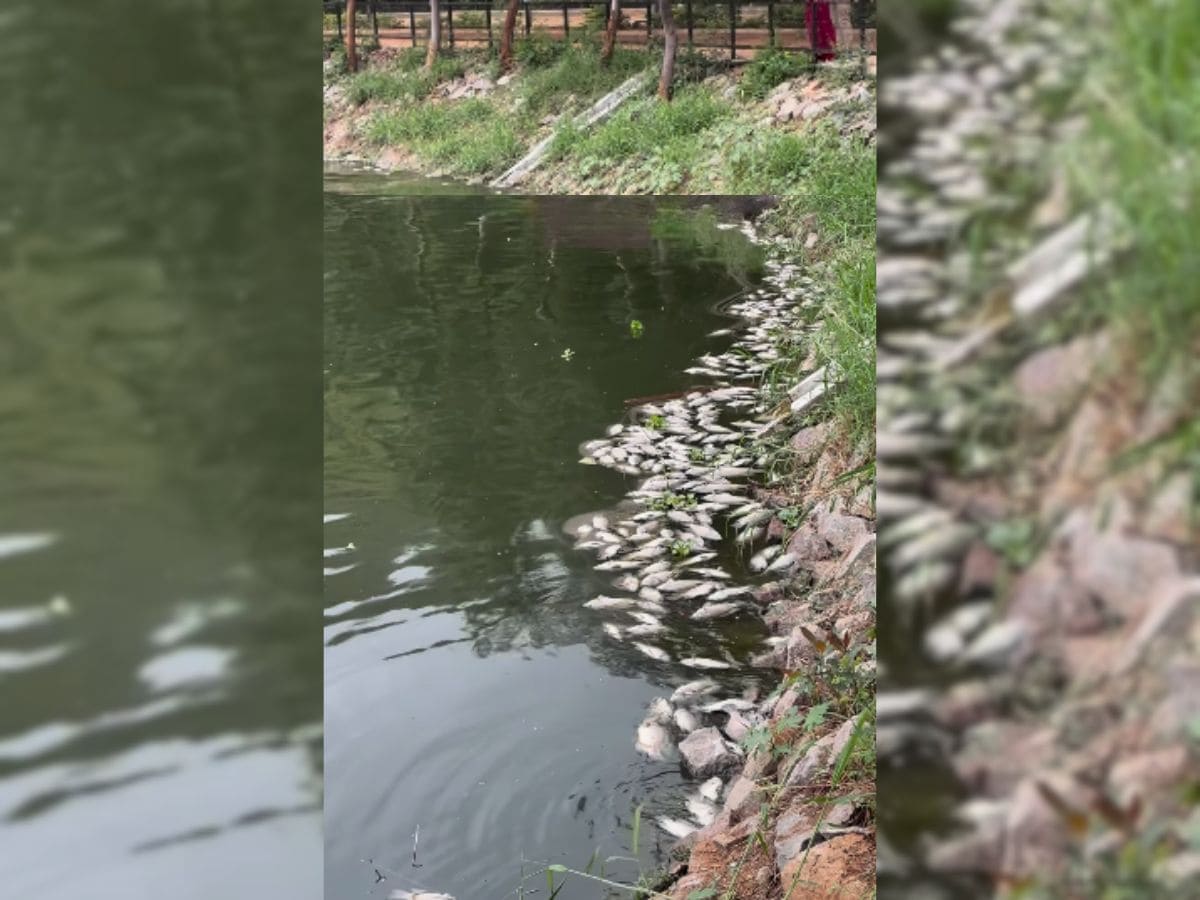
Hyderabad: The Telangana High Court on Friday, December 22 constituted a three-member bench for a probe into the conditions at the Durgam Cheruvu lake. This comes following videos and news reports of dead fish surfacing at the lake.
An expert committee, chaired by Atul Narayan Vaidya of NEERI, will investigate the degradation of Durgam Cheruvu and propose effective restoration measures.
HC raps HMDA, PCB over condition of Durgam Cheruvu
The panel does not include members of the Hyderabad Metropolitan Development Authority (HMDA) or the Telangana Pollution Control Board (PCB) as the High Court expressed no faith in them, accusing the bodies of being complicit in the deterioration of the lake. The HC also warned them against attempting to influence the panel or stifle the probe.
The state government has been directed to assist the panel by all means financially and provide police protection.
As soon as the court took up the issue, on December 12, the government pleader rushed to submit status reports of the rejuvenation works even though no notices were served, drawing the ire of the HC bench.
“You may furnish the report, but we know the contents. You are anxious to defend the very same officers who reduced this natural lake to what it is today,” the bench said. “We can’t rely on the reports of such officials.”
Even as several conservation efforts led by the GHMC, revenue and irrigation departments were launched in the past, “the condition of water bodies remains appaling,” said a local resident. “It may not be visible under the shimmering lights from skyscrapers around the water body, but it doesn’t take an expert to tell that the water is poisonous,” he added.
Studies of pollution
A scientific paper that was published in August 2023 by a team of researchers from the Civil Engineering departments of Mahindra University and IIT-Hyderabad, reported the amount of toxins in the lake. The report, ‘Non-Target Screening Of Organic Micropollutants In Durgam Cheruvu Lake, India’, stated that a total of 183 compounds that were identified from three sampling sites of the lake, including pharmaceuticals, metabolites, herbicides, fungicides, insecticides, pesticides, hormones, steroids, personal care products, plasticizers, and cyanotoxins among others.
More recently a sewerage treatment plant, art a cost of Rs 35 crore, was set up by the Hyderabad Metropolitan Water Supply and Sewage Board (HMWSSB). The pollution of the lake is now raising doubts over the functioning of the other 31 sewage plants set up by the board across the GHMC at a total cost of Rs 3,866 crore.
What polluted Durgam Cheruvu?
Originally spanning over 150 acres, the lake was built between 1518 and 1687 to supply water to Golconda Fort residents. It was revered for its reliability, even during a Mughal siege.
In the late 1950s, the area around the lake was pristine, but urbanisation gradually encroached upon its surroundings. By the 1970s, it was a popular spot for picnics and leisure activities. The early 2000s saw the AP government actively promoting tourism, and by 2001, it planned to expand boat services. It was then that the signs of encroachment and pollution emerged.
Despite court orders to protect the lake, various measures failed. By 2007, sewage treatment plants were inaugurated, yet the lake continued to degrade. In 2008, allegations surfaced of encroachment by the Andhra Pradesh Industrial Infrastructure Corporation. By 2010, the lake faced a shrinking water spread due to waste dumping.
Throughout the 2010s, pollution escalated, aquatic life vanished, and sewage inundated residential areas during rains. Various plans to revitalise the lake, including clean-up initiatives and court orders, failed amid growing encroachments.
By 2015, encroachment reached alarming levels, leading to the suspension of boating activities. The lake’s surroundings became a real estate hotspot, with proposed infrastructure developments.
In 2016, despite public outcry and protests, plans to construct a hanging bridge across the lake were approved. The ongoing encroachments and uncontrolled urbanization have led to the lake’s demise, signifying the tragic irony of urban development compromising natural treasures.

